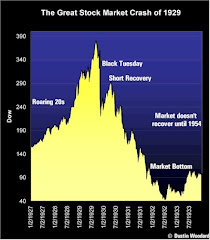As we head towards the finance meetings in Kananaskis there is much debate on the issue of pensions. Most Canadians are unaware and have minimal knowledgeable of the real issues surrounding pensions in Canada.
The photo above is from a magazine issue this year from Reason magazine. It describes what has happened in Canada and the US as our public servants have become our masters.
How much is enough???
One major actuarial firm in Canada attempted to calculate how much Canadians need in retirement. One issue that came to light was the 70% replacement income pensions of public sector employees.
One of my associates looked into the issue and discovered:
The standard of living of a public sector couple (one earning $90k and the other $60k) can rise by 72% after retirement. The example is conservative, meaning the result could have been even higher.For instance, if it is I assumed they would receive just 90% of CPP and assuming their mortgage payments (made over 25 years) represented just 20% of income whereas banks say it is safe to go up to 28% (on the mortgage payments .)
Canadians have been told to expect that 70% of working income needs to replaced in retirement. This is what the public sector and politicians have set up for themselves in pensions.
The rest of us who pay for the pensions of the Protected Class will have to get by with much less.
This is a stunning report. It was written by one of Canada's top actuarial firms. It shows that a 70% pension for someone in the public sector actually produces a lifestyle equivalent to 170% of their former working salary.
The PDF report is called "Saving for Retirement: a Fresh Perspective" and was written by Morneau Sobeco. It shows that although taxpayers fund public sector pensions at the rate of 70% of retiring income, there are is numerous reasons that most Canadians do not need a replacement income this high. In fact, a replacement pension of 50% would replace 100% of lifestyle income for a public sector employee.
Why do taxpayers fork over for a 70% replacement pension?
Why do taxpayers fork over for a 70% replacement pension?
The first reason is that for most Canadians their highest expense is the mortgage they pay on their homes. Almost 90% of seniors who own a home have no mortgage on it. Statscan Automatically this fact gives retirees a bonus on incomes up to 30% over working Canadians.
Next on the list is the fact that Canadians stop making payments for retirement saving when they retire. The public sector pension costs 34% of annual salary. Public sector employees pay about a third of this or 10% of their income. This payment stops at retirement and so is another 10% bonus for their incomes.
The list of deductions from a $100,00 income that Morneau gives includes the following:
Expenses Specific to Pre-Retirement Period (Annual)
CPP & EI deductions $2,000
Retirement saving at 9% of pay* $4,900
Child-related expenses $18,000
Employment expenses $4,000
Mortgage payments $20,000
Total deductions $48,900
The question of how much replacement income is required is starting to be asked by more and more players in the pension reform game. Jack Mintz himself questioned the level of retirement income required by Canadians. He suggested that a replacement for high income earners, such as public sector employees, needs to be only 50%.
His PDF report can be read at Summary Report on Retirement Income Adequacy Research
So the question becomes...
Why do working taxpayers have to fund so much in taxes to pay for the gold-plated retirements of the public sector?
Especially when the public sector employees will retire into a standard of living much higher than their already inflated government incomes.
Bill Tufts
Fair Pensions For All
Why do working taxpayers have to fund so much in taxes to pay for the gold-plated retirements of the public sector?
Especially when the public sector employees will retire into a standard of living much higher than their already inflated government incomes.
Bill Tufts
Fair Pensions For All




No comments:
Post a Comment